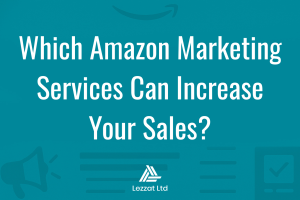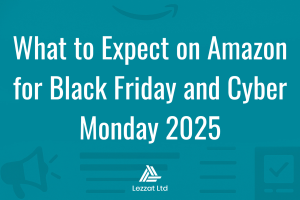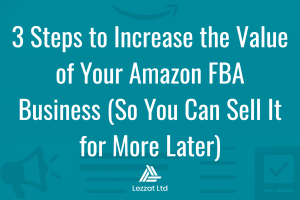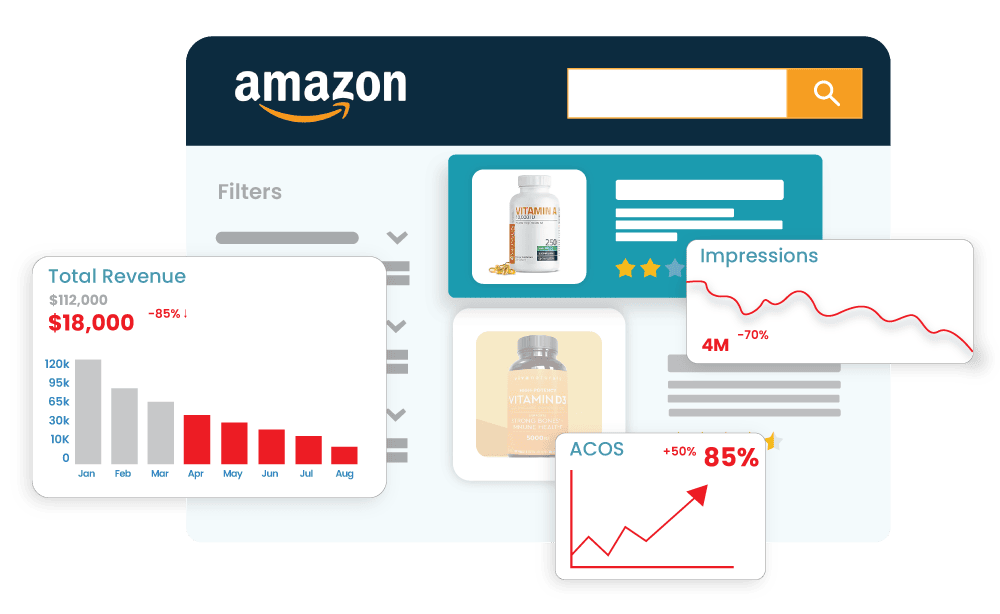Selling on Amazon isn’t slow-and-steady anymore. It’s a sprint. Ad costs are up, competitors are smarter, and customers expect next-day delivery as a given. To win, brands aren’t betting on one silver bullet. They’re tuning fulfilment for margin and speed while diversifying products, audiences, and channels to spread risk.
Why Fulfilment and Diversification Matter Right Now
Amazon rewards two things above all else: reliable speed and consistently strong customer experience. That’s why the operational levers inside FBA are now as critical as your ad strategy. Meanwhile, marketplace dynamics shift fast—category fee tweaks, seasonal storage pressure, policy changes, and new ad placements can all push and pull your P&L. The savviest brands are doing both:
- Squeeze more value from FBA: strip out costs that don’t add customer value and double down on availability that does.
- Spread your growth bets: add products, audiences, and channels so you aren’t over-exposed to one listing, one country, or one traffic source.
Do those two things well and you’ll ride the FBA revenue growth trends without becoming brittle when the environment changes.
The New Playbook for Amazon Fulfilment Optimisation
Amazon fulfilment optimisation isn’t a one-and-done project; it’s a continuous loop. These are the levers delivering the biggest gains right now.
1) Inbound smarter, not harder
- Carton and pallet efficiency: Right-size master cartons to the sweet spot for weight and dimensions. A few centimetres can drop a size tier or unlock faster placement—small tweak, big compounding impact.
- Label discipline: Standardise FNSKU labelling and scannability checks at the 3PL to avoid non-compliance charges. One bad pallet can stall a whole replenishment—silent out-of-stock risk.
- Cadenced POs: Smaller, more frequent replenishments reduce peak storage exposure while maintaining sell-through. Set cadence to your lead time plus a safety factor (e.g., 1.2×) so you replenish before the danger window opens.
2) Win on capacity, not just inventory
FBA availability isn’t only “do we have stock?” It’s where that stock sits and how much you’re allowed to send.
- Balance restock limits via velocity: Improve 30/60/90-day sell-through—tighten ad spend on profitable hero SKUs and use short, targeted coupons to clear tail variants.
- Placement-aware replenishment: Watch regional sell-through. If your units sit far from demand, Prime speed slips in key postcodes. Consider split shipments or Amazon placement services when the maths works.
3) Storage and size-tier engineering
- Dimensional truthing: Audit the top 20% of SKUs by revenue to confirm size tiers. Packaging tweaks that drop a tier deliver immediate savings—month after month.
- Seasonal storage strategy: For winter-heavy SKUs, plan a controlled drawdown by late Q1, shift excess to a 3PL to dodge long-term storage fees, then flow back in ahead of the next seasonal lift.
4) Availability hygiene: keep Buy Box uptime high
- Consolidate ASIN contributions: Lock the correct title, attributes, and browse nodes so rogue edits don’t suppress or split the catalogue.
- MAP/price parity checks: If you sell through other retailers, monitor parity to protect your Buy Box. Align promo calendars with stock windows.
5) Prime speed, selectively
- Prime where it pays: Use FBA for SKUs where fast delivery moves conversion. Keep long-tail variants on FBM via your 3PL. Hybrid fulfilment preserves catalogue breadth while protecting margin.
- Multi-Channel Fulfilment testing: For Shopify or other marketplaces, trial MCF only where speed truly lifts conversion and the fee stack still nets profit.
6) PDP conversion upgrades that multiply ops gains
Ops improvements pay off most when pages convert. Give your best-stocked ASINs best-in-class content:
- Premium A+ (if eligible): Use comparison tables and objection-busting modules.
- Short first bullet, proof-led second: Hook quickly, then back it with social proof or a verifiable benefit.
- Video for top queries: A 30–45s demo tackling the most common hesitation in your reviews.
Pull these levers and you’ll see higher sell-through, kinder restock allowances, and a virtuous FBA flywheel.
Data Signals to Steer FBA Decisions
You don’t need 20 dashboards—just the signals that change decisions:
- Sell-through by node/region: If you can get regional signals, use them to plan split shipments.
- Days of cover (including inbound): Track true cover so you don’t over-send just because a container’s on the water.
- Blocked/stranded time: Minutes matter. Run daily checks to fix attribute conflicts, hazmat flags, or suppressions—fast.
- Return reason codes: Engineer packaging or PDP copy around the top reasons; it’s a quiet margin win.
These are the practical inputs behind FBA seller growth—faster feedback loops leading to better stock, stronger delivery promises, and higher conversion.
Diversification: Insurance for Growth

Diversification doesn’t mean doing everything, everywhere. It’s about adding a handful of high-leverage bets that reduce single-point risk and unlock new revenue. Here are Amazon seller diversification ideas that work even with limited bandwidth.
1) Product & price-point diversification
- Adjacent use-cases: If your hero solves a premium need, add an accessory or refill that captures repeat purchase without cannibalising the core.
- Format variants for fees: A “lite” pack that drops a size tier can win price-sensitive searches and help you hold the Buy Box in promo peaks.
- B2B packs: Larger case-size listings under Business Pricing bring lower AOV but steadier repeat volume.
2) Audience diversification on-Amazon
- Brand Store as a destination: Build clear paths for new vs returning customers. New: bestsellers + proof. Returning: bundles + accessories.
- Posts and Inspire testing: Use lifestyle images and short form to catch top-of-funnel natively. Repurpose your best UGC; consistency beats perfection.
- Customer Engagement (email to followers): Announce new variants or seasonal bundles to warm audiences you already “own” inside Amazon.
3) Channel diversification beyond Amazon
- D2C with a reason to buy: Think bundles, early access, or an extended warranty—something Amazon can’t match.
- Secondary marketplaces (UK/EU): eBay, OnBuy, or vertical marketplaces can move refurbished or seasonal stock without muddying Amazon pricing.
- Social commerce pilots: TikTok Shop or Instagram Checkout can cheaply validate creative angles—and the best assets feed back into your PDPs.
4) Fulfilment diversification
- Hybrid FBA/FBM: Keep FBA for top movers; use FBM via a 3PL for long tail or oversized items where FBA economics pinch.
- Geo-fulfilment: Expanding to the EU? Consider Pan-EU or local 3PLs country-by-country based on demand validation. Start cross-border FBA only if Prime-level promises hold.
5) Traffic and attribution diversification
- Amazon Attribution for off-Amazon ads: When running Meta, Google, or creator traffic, use Attribution links to measure downstream impact and tune creatives.
- Creator seeding: Gift 20–30 micro-creators, secure rights for the best clips, then recycle into Sponsored Brands Video or PDP videos.
Keep diversification deliberate: one or two new bets per quarter—no scattergun.
Advertising Trends That Complement FBA Optimisation
Ads and ops are two sides of the same coin. These ad moves compound when fulfilment is tight:
- Sponsored Brands Video everywhere: Short, honest demos with a clear first five seconds beat glossy brand films. Drive to your Brand Store’s “New here?” page to curate the first experience.
- Top-of-search concentration: Focus on the 10–20 queries you can truly win on price, delivery promise, and reviews. Spreading across 500 keywords bloats ACOS and slows rank.
- Retail-aware bidding: Dial down when variants dip below the stock threshold for fast delivery; re-ramp when inbound lands.
- Search Query Performance insights: Check monthly to spot rank-but-under-convert gaps. Fix PDP content or pricing before throwing more budget.
When ads amplify in-stock, Prime-speed promises, you see compounding gains in your FBA revenue growth trends.
Common Pitfalls (And How to Avoid Them)

- Chasing every new programme: Choose the two that map directly to your goal (e.g., faster sell-through or lower fees). Depth beats breadth.
- Ignoring packaging impact: Millimetres matter. Validate dimensions before you pour money into ads.
- Over-reliance on one hero ASIN: Efficient—until a stock-out, price war, or a bad review. Build a second revenue pillar early.
- “Set and forget” inventory rules: Seasonality, fees, and demand curves shift. Revisit assumptions quarterly.
Bringing It Together
The north star is simple: make your products easy to buy and delightful to own, while keeping your cost-to-serve lean. Operationally, that means disciplined Amazon fulfilment optimisation—capacity, placement, size-tier discipline, and PDP conversion that multiplies your logistics work. Strategically, it means selecting a short list of Amazon seller diversification ideas—a B2B pack here, a creator-powered video there, a hybrid FBA/FBM setup for long-tail SKUs—that reduce risk and open new revenue.
The landscape will keep evolving, but brands that pair tight operations with thoughtful diversification will keep finding upside in the FBA revenue growth trends—not just this quarter, but for the long haul.
Ready to go further?
If you’d like expert eyes on your Amazon strategy, we’d love to help. Lezzat partners with UK and EU sellers to optimise fulfilment, scale ads without wrecking margin, and diversify revenue streams that actually stick. Reach out to us to talk through your goals, and while you’re here, explore our other articles and case studies—they’re packed with real-world playbooks, lessons, and results you can put to work straight away.






